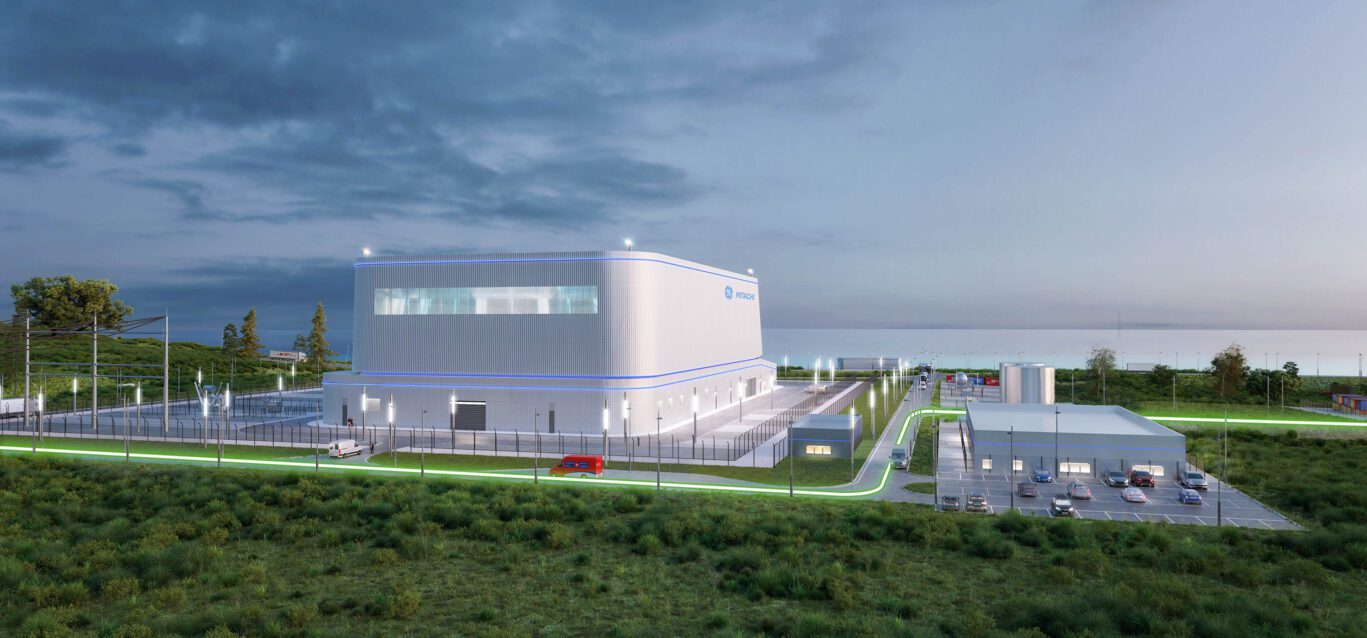OPG Supports the United Nations Sustainable Development Goals
OPG supports the achievement of the United Nations Sustainable Development Goals (UN SDGs). The SDGs are a collection of 17 interdependent global goals designed to be a blueprint to achieve a better and more sustainable future for all by addressing the world’s most pressing economic, social, and environmental issues. The SDGs were adopted in 2015 by the United Nations General Assembly and are intended to be achieved by 2030.
All of the goals contain important challenges for developing and developed countries alike. Every country has a responsibility for playing a part in delivering the global vision to fight climate change, relieve anthropogenic pressures on the planet and its natural systems, and make economies and growth pathways more sustainable.
How we're advancing SDGs
OPG’s business priorities and practices align with the SDGs and we have the ability to make significant contributions to a number of goals, including the following:
SDG 2: Zero Hunger
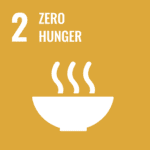 Alignment with SDG target:
Alignment with SDG target:
Target 2.4: By 2030, ensure sustainable food production systems and implement resilient agricultural practices that increase productivity and production, that help maintain ecosystems, that strengthen capacity for adaptation to climate change, extreme weather, drought, flooding and other disasters and that progressively improve land and soil quality.
OPG contribution toward SDG:
- For more than 50 years, OPG’s Pickering Nuclear GS has supplied the world with Cobalt-60 (Co-60), an isotope used to sterilize perishable foods such as fruits, meats, and spices.
- Today, Pickering Nuclear’s Units 5 to 8 provide about 20% of the world’s supply of Co-60, making Ontario one of the leading sources of this important product.
- In addition to the existing work being done on Co-60 at the Pickering GS, OPG has started work on installing Co-60 capabilities in all four units at Darlington Nuclear GS. The first Co-60 harvest out of Darlington is expected in the late 2020s, with average annual yields expected to be close to double that of Pickering, helping to address a growing global need for sterilization.
SDG 3: Good Health and Well-Being
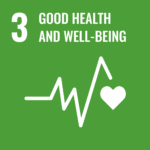 Alignment with SDG target:
Alignment with SDG target:
Target 3.4: By 2030, reduce by one third premature mortality from non-communicable diseases through prevention and treatment and promote mental health and well-being.
OPG contribution toward SDG:
- Nuclear stations are best known for their ability to generate abundant quantities of clean and reliable energy for millions of homes and businesses. A lesser-known function of Ontario’s nuclear reactors is their ability to produce many isotopes, including critical medical isotopes, that directly result in millions of people around the world enjoying a healthier and safer quality of life.
- For more than 50 years, OPG’s Pickering Nuclear GS has supplied the world with Cobalt-60 (Co-60), an isotope used to sterilize about 40% of all single-use medical devices, such as syringes, gloves, implants, and surgical instruments.
- Today, Pickering Nuclear’s Units 5 to 8 provide about 20% of the world’s supply of Co-60, making Ontario one of the leading sources of this important product.
- In addition to the existing work being done on Co-60 at the Pickering GS, OPG has started work on installing Co-60 capabilities in all four units at Darlington Nuclear GS. The first Co-60 harvest out of Darlington is expected in the late 2020s, with average annual yields expected to be close to double that of Pickering, helping to address a growing global need for sterilization.
- In addition to Co-60, nuclear generation also produces heavy water, or deuterium oxide, as well as tritium, a by-product of CANDU reactor operation. Deuterium oxide is an isotopic form of water that can be used to enhance medical imaging and help pharmaceuticals last longer in the bloodstream. It is essential for the continued CANDU fission process, and it is also a component used in every smartphone.
- OPG’s subsidiary, Laurentis Energy Partners (LEP), is leading the way in isotope innovation. LEP produces high-purity Helium-3 (He-3) to meet global demand. He-3 has many uses, including Magnetic Resonance Imaging (MRI). The He-3 is extracted from tritium stored at OPG’s Darlington station. LEP is also working with BWXT Medical Ltd. to harvest Molybdenum-99 (Mo-99) from Darlington’s Unit 2, making Darlington the only commercial-scale reactor in the world to produce this critical product. Mo-99 is a parent isotope of Technetium-99m, one of the most prevalent diagnostic imaging agents in nuclear medicine. Technetium-99m is used on skeletal, brain, and organ imaging to detect and diagnose cancer and various diseases. Once operational, the arrangement between LEP and BWXT will be capable of producing enough Mo-99 to supply a significant portion of the current and future North American demand for this important diagnostic imaging radioisotope.
- OPG promoted mental health and well-being in various ways, including through partnering with Construction Safety Research Alliance and Construction Industry Institute on a mental health research project.
SDG 4: Quality Education
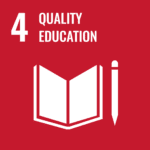 Alignment with SDG target:
Alignment with SDG target:
Target 4.5: By 2030, eliminate gender disparities in education and ensure equal access to all levels of education and vocational training for the vulnerable, including persons with disabilities, Indigenous Peoples and children in vulnerable situations.
OPG contribution toward SDG:
- OPG continues to support promising Indigenous students through the John Wesley Beaver Memorial Scholarships (JWBMS). Annual JWBMS scholarships are awarded in support of Indigenous students studying in the areas of administration, computer programming, computer, chemical and civil engineering, as well as law. The scholarship was established in 1995 and is named after notable engineer and leader, John Wesley Beaver, who was a fighter pilot during the Battle of Britain and Chief of Alderville First Nation before joining OPG’s predecessor company as a junior engineer in 1949.
- OPG continues to take active steps to support equity, diversity, and inclusion (ED&I) within and beyond the energy sector, including in host communities. OPG has created a specialized recruitment team to focus on building and maintaining partnerships with community organizations that support equity-seeking individuals. Similarly, the company continues to invest with partners to build long-term candidate pools and pipelines, such as in the case of continued investments in education programs at Ontario Tech University and Durham College, and with community partner, the BlackNorth Initiative.
- OPG’s Power for Change community investment program is focused on giving in several focus areas, including education, which includes student awards/scholarships and Science, Technology, Engineering, and Math (STEM) initiatives.
SDG 5: Gender Equality
Alignment with SDG target: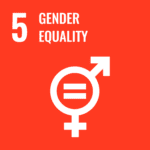
Target 5.5: Ensure women’s full and effective participation and equal opportunities for leadership at all levels of decision-making in political, economic and public life.
OPG contribution toward SDG:
- A major commitment we are working toward is to become a global equity, diversity, and inclusion (ED&I) leader by 2030. We know to achieve our sustainability and climate change goals, we will need to rely on a diverse workforce that is welcoming of a wide range of ideas, skills, and backgrounds. To build this workforce, we offer ED&I training and education to employees.
- OPG’s 10-year ED&I Strategy (the Strategy), launched internally in 2021 and publicly in 2022, builds on the company’s ED&I promise to accelerate equity, celebrate diversity, and foster a culture of inclusion. The Strategy provides a roadmap to guide the company’s journey towards ED&I excellence by embedding ED&I practices and measuring outcomes in the short, medium, and long-term. OPG has established an ED&I Strategy Council to oversee implementation and tracking of the Strategy’s progress. Council working groups are advancing the Strategy’s alignment, assessment, reporting and Broader Employment Equity Plan, which sets out employment equity targets to ensure OPG’s workforce reflects the company’s host communities.
- At the highest levels of the company, OPG’s Board of Directors continues to be one of the most diverse in the industry. The Board is greater than 50% gender diverse and overall diversity is also over 50%.
SDG 6: Clean Water and Sanitation
Alignment with SDG target: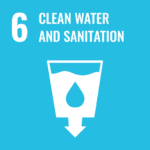
Target 6.6: By 2020, protect and restore water-related ecosystems, including mountains, forests, wetlands, rivers, aquifers and lakes.
OPG contribution toward SDG:
- OPG’s Regional Biodiversity Program complements our on-site work by helping to fund and promote efforts that contribute to the protection and restoration of sensitive habitat and habitat corridors across Ontario. As a member of the Ontario Biodiversity Council, OPG supports Ontario’s Biodiversity Strategy. The Strategy outlines the framework for the conservation of Ontario’s biodiversity by reducing threats, enhancing resilience, engaging people, and improving knowledge. Qualified conservation partners receive funding for projects that address key biodiversity issues in the areas of reforestation, wetlands, grasslands, and lakes and rivers. Our conservation partners also work with local Indigenous communities to ensure Traditional Ecological Knowledge is incorporated into restoration projects.
- OPG also supports initiatives that contribute to biodiversity education, awareness, and ecological land stewardship. Our partners include the Bruce Trail Conservancy, Earth Rangers, Local Enhancement and Appreciation of Forests (LEAF), Ontario Nature, and the Toronto Wildlife Centre. OPG continues to partner with the Lake Ontario Atlantic Salmon Restoration Program, also known as Bring Back the Salmon, to help restore a self-sustaining Atlantic salmon population to Lake Ontario and its tributaries.
- As the operator of dozens of dams on rivers systems throughout the province, OPG takes a proactive approach to protect fish and fish habitat that may be impacted by the company’s activities. Measures include trap and transport programs, fish ladders, stocking programs, barriers and deterring structures, water flow alterations, habitat protection and creation, water quality monitoring, and station effluent temperature limits to manage and mitigate impacts to fish. OPG also works cooperatively with our regulators, the scientific community, and partner utilities to protect fish and fish habitat.
- OPG also carefully manages the quality of all wastewater discharged from its generating stations to the environment. All station wastewater effluent to the environment is required to meet strict site-specific compliance obligations. OPG regularly reports its wastewater monitoring results to various regulators such as Environment and Climate Change Canada, the Ontario Ministry of Environment, Conservation and Parks, and the Canadian Nuclear Safety Commission in accordance with regulatory requirements. These requirements include the National Pollutant Release Inventory, Environmental Compliance Approvals, and Nuclear Power Reactor Operating Licences.
SDG 7: Affordable and Clean Energy
Alignment with SDG target: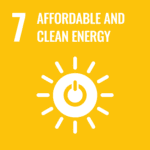
Target 7.1: By 2030, ensure universal access to affordable, reliable and modern energy services.
Target 7.2: By 2030, increase substantially the share of renewable energy in the global energy mix.
OPG contribution toward SDG:
- In 2014, we stopped burning coal to generate electricity and embarked on a company-wide mission to create low-cost, low-carbon electricity for Ontario. Today, we have some of the lowest-carbon electricity not just in North America, but in the world, which reflects our diverse mix of generating assets and our record of innovation and successful delivery of projects on time and on budget.
- OPG continues to progress work on Small Modular Reactors (SMRs), nuclear refurbishment, hydroelectric facilities, green hydrogen, energy storage, and electrification infrastructure projects.
- OPG prioritizes providing affordable power at competitive rates by routinely reinvesting in the efficiency of our generating assets, some of which have been creating power for many decades, and by working diligently to keep operating costs low. OPG helps moderate Ontario’s electricity rates by providing power that costs less than other generators.
- We’re also the only rate-regulated electricity generator in the province. In practice, this means that rates for most of our generating assets are set through public hearings with the Ontario Energy Board (OEB). As mandated by the OEB Act, these rate application proceedings are conducted in an open and transparent manner and OPG’s application documents are publicly disclosed on our website.
- During OPG’s rate application process, individual consumers or groups of electricity ratepayers may request to participate directly in the public hearings and inform the OEB’s decision on rates, which helps ensure OPG is accountable to Ontario’s consumers for our electricity rates. In 2021, OPG’s regulated rates were set for the 2022-2026 period.
SDG 8: Decent Work and Economic Growth
Alignment with SDG target: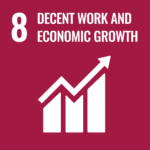
Target 8.2: Achieve higher levels of economic productivity through diversification, technological upgrading and innovation, including through a focus on high-value added and labour-intensive sectors.
Target 8.5: By 2030, achieve full and productive employment and decent work for all women and men, including for young people and persons with disabilities, and equal pay for work of equal value.
Target 8.8: Protect labour rights and promote safe and secure working environments for all workers, including migrant workers, in particular women migrants, and those in precarious employment.
OPG contribution toward SDG:
- In addition to helping moderate Ontario’s electricity rates by providing power that costs less than other generators, OPG has significant direct and indirect impacts on the province’s economic and social fabric, including generating billions of dollars in net income for the Province over the last five years, directly employing thousands of skilled, dedicated people and supporting thousands of additional jobs across Ontario through our clean energy projects and supply chains.
- We spend billions of dollars annually to operate and maintain and invest in our facilities and assets. Our redevelopment, upgrades, and refurbishment projects inject millions of dollars into the economy. We purchase goods and services from numerous suppliers, the vast majority of which are local businesses.
- We are also making advances in our Reconciliation journey. In 2021, OPG launched its first ever Reconciliation Action Plan (RAP). Since that time, the RAP has guided our work with Indigenous communities, businesses, and organizations as we seek to grow economic benefits, increase Indigenous representation across OPG, and meaningfully advance Reconciliation. We are actively increasing the number of Indigenous businesses we purchase goods and services from and are developing partnerships with Indigenous communities that provide jobs, skills training, and lasting economic benefits.
- OPG puts the health and safety of its employees first and foremost. Pursuing safety excellence starts with our strong health and safety culture, which has been recognized with a number of industry awards over the years. Our commitment to health and safety excellence includes a framework of standards and procedures, mechanisms for continual improvement, and a team-oriented approach.
- Fostering positive labour relations is an important focus for OPG and greater than 80% of OPG’s regular workforce was represented by a union, including the Power Workers’ Union (PWU), the Society of United Professionals (Society), and several building trades unions.
SDG 9: Industry, Innovation and Infrastructure
Alignment with SDG target: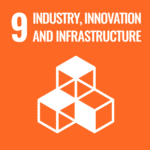
Target 9.1: Develop quality, reliable, sustainable and resilient infrastructure, including regional and transborder infrastructure, to support economic development and human well-being, with a focus on affordable and equitable access for all.
OPG contribution toward SDG:
- We have continued to make steady advancements in building new clean, sustainable generation infrastructure to meet the growing needs of the future, as well as becoming a more inclusive, diverse, and socially responsible company.
- OPG continues to lead the development of Small Modular Reactors (SMRs), the next generation of clean and reliable nuclear power. OPG has partnered with GE Hitachi to bring the BWRX-300 SMR to Ontario for the Darlington New Nuclear Project (DNNP). The first BWRX-300 unit is planned to be built by the end of 2028 and be in commercial service by the end of 2029. In 2023, the Ontario government announced it is working with OPG to commence planning and licensing for three additional SMRs, for a total of four, at our Darlington GS site. The three additional units are expected to be deployed in the mid-2030s. Once in-service, this SMR fleet will provide 1,200 MW of low-carbon power for Ontario, enough to power about 1.2 million homes. The project is expected to create and sustain 2,000 jobs each year in Canada over the next 65 years and will contribute $13.7 billion to Ontario’s GDP.
- OPG’s Renewable Generation division has advanced several clean energy projects, including refurbishment of several generating units and stations across our hydro fleet and the rehabilitation of multiple dam structures to ensure continued compliance with dam safety requirements.
- To ensure our low-carbon energy footprint, OPG continues to invest in our nuclear operations. This includes progressing the Darlington Refurbishment project, one of Canada’s largest clean energy infrastructure projects. Once completed by the end of 2026, the four-unit refurbishment will extend Darlington’s operating life by at least 30 years and have the same impact as removing two million cars per year from Ontario’s roads.
- In 2023, OPG completed an updated feasibility assessment for refurbishing Units 5 to 8 at the Pickering GS as requested by the Province in September 2022. The updated assessment was based on the anticipated refurbishment project scope. Following OPG’s submission of the feasibility assessment as approved by the Board of Directors in August 2023, the Province announced its support for OPG proceeding with next steps toward refurbishing Units 5 to 8 at Pickering GS in January 2024. OPG will now proceed with certain pre-execution phase activities, which include preliminary engineering work and securing long-lead components.
- OPG’s leadership in the push for electrification began a number of years ago with the launch of Plug’n Drive. Since that time, we have launched our subsidiary, PowerON Energy Solutions, to provide electrification and charging infrastructure for municipal transit agencies and corporate fleets, including its work with the Toronto Transit Commission (TTC) to electrify the TTC’s bus fleet – North America’s largest transit electrification project to date.
- In partnership with Hydro One, OPG continues to expand its Ivy Charging Network, which is one of the largest EV fast-charging networks in Ontario and includes “Ivy Park & Charge,” the destination-based Level 2 charging service for EV drivers offered through partnerships with municipal and business partners, and Ivy’s Level 3 fast-charging service, “Ivy Charge & Go,” that operates fast chargers across 20 ONroute plaza locations along Highways 400 and 401 in Ontario. Ivy has also offers Ivy Home, a holistic EV charging solution to help make charging at home hassle-free.
SDG 10: Reduced Inequalities
Alignment with SDG target: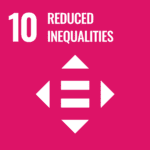
Target 10.2: By 2030, empower and promote the social, economic and political inclusion of all, irrespective of age, sex, disability, race, ethnicity, origin, religion or economic or other status.
OPG contribution toward SDG:
- OPG continues to prioritize its social commitments, including our work with Indigenous communities to advance our Reconciliation Action Plan, and our efforts to become a world-leading equity, diversity, and inclusion (ED&I) employer by 2030 by enacting our ED&I Strategy.
- In 2021, OPG launched its first ever Reconciliation Action Plan (RAP). Since that time, the RAP has guided our work with Indigenous communities, businesses, and organizations as we seek to grow economic benefits, increase Indigenous representation across OPG, and meaningfully advance Reconciliation.
- Another major commitment we are working toward is to become a global equity, diversity, and inclusion (ED&I) leader by 2030. We know to achieve our sustainability and climate change goals, we will need to rely on a diverse workforce that is welcoming of a wide range of ideas, skills, and backgrounds. To build this workforce, we offer ED&I training and education to employees, including anti-racism training.
- OPG’s 10-year ED&I Strategy (the Strategy), launched internally in 2021 and publicly in 2022, builds on the company’s ED&I promise to accelerate equity, celebrate diversity, and foster a culture of inclusion. The Strategy provides a roadmap to guide the company’s journey towards ED&I excellence by embedding ED&I practices and measuring outcomes in the short, medium, and long-term. OPG has established an ED&I Strategy Council to oversee implementation and tracking of the Strategy’s progress. Council working groups are advancing the Strategy’s alignment, assessment, reporting and Broader Employment Equity Plan, which sets out employment equity targets to ensure OPG’s workforce reflects the company’s host communities.
- OPG also advanced its corporate commitment to ED&I at the enterprise and site levels through comprehensive programming, local ED&I committees, and province-wide employee resource groups. These structures provide ongoing support for ED&I policies, programs, and initiatives, and facilitate employee engagement and feedback, including networking opportunities, peer-to-peer discussion, and promotion of ED&I awareness.
- OPG continues to take active steps to support ED&I within and beyond the energy sector, including in host communities. OPG has created a specialized recruitment team to focus on building and maintaining partnerships with community organizations that support equity-seeking individuals. Similarly, the company continues to invest with partners to build long-term candidate pools and pipelines, such as in the case of continued investments in education programs at Ontario Tech University and Durham College, and with community partner, the BlackNorth Initiative.
- In recognition of the company’s leading programs and practices, OPG was named one of Canada’s Best Diversity Employers for 2023 by Mediacorp Inc. This award marks the achievement of OPG’s short-term ED&I Strategy goal set in 2020 and reflects the work done to build a strong foundation for long-term ED&I excellence with a goal of becoming a global leader in ED&I by 2030.
SDG 12: Responsible Consumption and Production
Alignment with SDG target: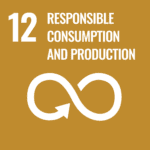
Target 12.5: By 2030, substantially reduce waste generation through prevention, reduction, recycling and reuse.
Target 12.6: Encourage companies, especially large and transnational companies, to adopt sustainable practices and to integrate sustainability information into their reporting cycle.
Target 12.7: Promote public procurement practices that are sustainable, in accordance with national policies and priorities.
OPG contribution toward SDG:
- OPG takes seriously its responsibility to conduct its business in ways that enhance the protection of our environment and benefit the communities in which we operate, and to do so in a way that is transparent and open. To this end, we publish annual reporting on our ESG performance, and regularly update opg.com with a wide variety of ESG-related information, stories, and reports. Additional sustainability reporting, including performance data, is available on the Our Commitment to ESG & Sustainability page.
- OPG is always looking for ways to minimize its environmental footprint, which includes looking for ways to reduce waste and increase reuse and recycling of materials. To do this, OPG ensures that solid waste and recycling opportunities are identified as part of work planning processes. Work groups are trained to follow site-specific waste procedures and Transportation of Dangerous Goods training requirements to assure proper waste disposal.
- Nuclear Sustainability is the division of OPG responsible for the safe management of nuclear waste and by-products from nuclear electricity generation, plant refurbishments, and future decommissioning projects.
- Since the beginning of OPG’s reactor operations, we have reduced our low-level waste (LLW) volumes by 58% through various processing methods, such as incineration and compaction, and we know we can reduce even more. We have a goal to reduce LLW volumes at our Western waste management facility in Kincardine by 50% by 2032 and we are investing in our people, new technology, and research to hit that target.
- OPG is committed to using its procurement to advance its corporate values and ESG principles. Our suppliers and contractors must demonstrate their ability to manage quality and health and safety targets, as well as meet technical and commercial requirements. OPG works with a third-party service provider to evaluate key suppliers in several ESG areas. Suppliers are evaluated in the categories of environmental performance, labour and human rights, ethics, and sustainable procurement.
- Evaluation criteria include global considerations such as customer health and safety, forced labour, anticompetitive practices, corruption, and environmental practices. ESG evaluations facilitate corrective actions to ultimately improve vendor performance, reduce emissions, and achieve sustainable outcomes. This work will also help determine a baseline for, and then ultimately reduce, OPG’s Scope 3 emissions.
- OPG procurement contracts are awarded following OPG’s established procurement activity procedures, with suppliers expected to ensure full compliance with OPG’s Supplier Code of Conduct and Code of Business Conduct in their business dealings with OPG. These requirements are part of commercial terms in our Agreements. Code of Conduct concerns are managed and investigated through our Ethics Department. Certain suppliers are subject to OPG audits and assessments, which are commensurate with their approved scope of work and specified quality requirements. OPG has numerous suppliers and is a proud supporter of local businesses.
SDG 13: Climate Action
Alignment with SDG target: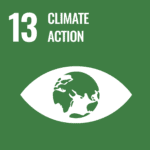
Target 13.1: Strengthen resilience and adaptive capacity to climate-related hazards and natural disasters in all countries.
Target 13.3: Improve education, awareness-raising and human and institutional capacity on climate change mitigation, adaptation, impact reduction and early warning.
OPG contribution toward SDG:
- By building and operating low-carbon generating stations, we have helped the province avoid millions of tonnes of greenhouse gas emissions. In 2014, we completed one of the world’s single-largest climate change actions by closing the last of our coal stations.
- Ontario’s electricity ranks, by a wide margin, among the lowest globally from a carbon intensity perspective when compared to other jurisdictions, including Canada as a whole, the United States, Britain, France, and Germany.
- To underline our commitment to climate action, in November 2020, OPG launched our first-ever Climate Change Plan, which outlines our path to achieving two ambitious goals:
- OPG will be a net-zero carbon company by 2040. We will implement and invest in carbon reductions and offsets that achieve an overall balance between emissions produced and emissions removed or displaced from the atmosphere.
- OPG will be a catalyst to help the markets where we operate achieve net-zero carbon economies by 2050. We will be a leading energy innovation company, advancing clean technology solutions.
- OPG’s Climate Change Plan includes more than 50 specific interim actions to be taken by 2025 in the areas of mitigation, adaptation, innovation, and leadership.
- OPG has internal governance in place to help the company deliver its Climate Change Plan and associated actions. We have established roles and accountability for the plan as well as a structure to oversee and implement the plan’s actions.
- Our efforts to progress our Climate Change Plan are aligned with the IESO’s Pathways to Decarbonization Report as well as the Province’s Powering Ontario’s Growth plan.
- Some of the key actions already underway to fulfill our climate goals include: SMRs, asset renewal and development, electrification, hydrogen, energy storage, and other climate change initiatives.
- In Ontario’s transition towards a clean energy future, natural gas generation plays an important role. With its ability to ramp up and down quickly, natural gas generation is an important, affordable enabler of intermittent renewable energy like solar and wind, providing back up when the sun is not shining and when the wind is not blowing. This flexibility also allows natural gas plants to meet changes in demand as well as peaking needs, contributing to the stability of Ontario’s electricity grid. This allows for quicker decarbonization of higher emitting sectors, such as transportation, buildings, and industry.
- As part of our Climate Change Plan, OPG is also investigating negative emissions technologies, and continuing to support nature-based solutions like biodiversity stewardship initiatives. OPG is also monitoring developments in electric utility carbon capture and sequestration, as well as early-stage developments of a regulatory framework to permit carbon sequestration in Ontario. All of these current and future actions will help OPG meet its climate goals and position Ontario for success in the post-carbon future.
- To adapt and enhance the resilience of our operations, OPG has launched several initiatives including:
- Development and issuance of an internal climate change strategy and roadmap of deliverables.
- Establishment of an internal climate change adaptation working group, with cross-functional business unit representation and senior leadership endorsement.
- Initiation of climate risk and vulnerability assessments for existing generation assets and for specific Nuclear and Renewable Generation projects.
- Active participation in external collaboration, benchmarking, and research opportunities with expert consortiums and industry groups in order to advance the development of industry-specific adaptation strategies and frameworks.
- Continued prioritization of infrastructure improvements to minimize climate-related impacts, including the Little Long and Smoky Falls dam safety projects.
SDG 15: Life on Land
Alignment with SDG target: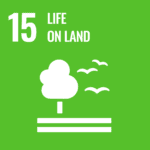
Target 15.1: By 2020, ensure the conservation, restoration and sustainable use of terrestrial and inland freshwater ecosystems and their services, in particular forests, wetlands, mountains and drylands, in line with obligations under international agreements.
Target 15.8: By 2020, introduce measures to prevent the introduction and significantly reduce the impact of invasive alien species on land and water ecosystems and control or eradicate the priority species.
OPG contribution toward SDG:
- For several decades, OPG has been a champion of biodiversity in Ontario, working to protect and nurture the ecosystems that Ontarians rely on. At our generation sites, in our communities, and in the wilderness, we work to enhance biodiversity and wildlife conservation with a focus on the four Rs of biodiversity stewardship:
- Retain what is ecologically significant.
- Restore habitats that have been degraded.
- Replace habitats that have been lost, where ecologically and economically feasible.
- Recover species that are at risk.
- Some of OPG’s key achievements over the years include planting more than 9 million native trees and shrubs and stocking more than seven million Atlantic salmon in local waterways.
- Our ongoing on-site and regional biodiversity programs also support our Climate Change Plan and Reconciliation Action Plan. The focus areas of these programs include land stewardship, measuring and monitoring OPG’s ecological features, including native and invasive species, and preserving, restoring, and creating habitat for Ontario’s native flora and fauna.
- Other highlights from our on-site biodiversity programs include:
- Increased the number of nest boxes and repaired older nest boxes to provide additional habitat for tree swallows and Eastern bluebirds.
- Installed a new turtle basking platform at Darlington’s Coots pond (along the waterfront trail), that was built in partnership with the students at Courtice Secondary School.
- Continued to remove extensive invasive species from OPG sites (phragmites, dog strangling vine, buckthorn, etc.), including through the use of weed-eating goats.
- Planted pollinator-friendly gardens and meadows at the Pickering Learning Centre and Darlington Energy Complex.
- Qualified conservation partners receive funding for projects that address key biodiversity issues in the areas of reforestation, wetlands, grasslands, and lakes and rivers. Our conservation partners also work with local Indigenous communities to ensure Traditional Ecological Knowledge is incorporated into restoration projects.
- OPG also supports initiatives that contribute to biodiversity education, awareness, and ecological land stewardship. Our partners include the Bruce Trail Conservancy, Earth Rangers, Local Enhancement and Appreciation of Forests (LEAF), Ontario Nature, and the Toronto Wildlife Centre. OPG continues to partner with the Lake Ontario Atlantic Salmon Restoration Program, also known as Bring Back the Salmon, to help restore a self-sustaining Atlantic salmon population to Lake Ontario and its tributaries.
- As the operator of dozens of dams on rivers systems throughout the province, OPG takes a proactive approach to protect fish and fish habitat that may be impacted by the company’s activities.
- Water is an essential resource to OPG – and to the places we operate in. This is why OPG is actively engaged with government agencies, scientists, and municipalities to predict conditions and manage our river systems for the safety of the community and the environment. OPG also carefully manages the quality of all wastewater discharged from its generating stations to the environment.
Related Information
Subscribe and stay informed
Sign up to receive the latest news, project updates, and event information from OPG.
- Home
- About us
- Who we are
- Our commitment to ESG & sustainability
- United Nations sustainable development goals
